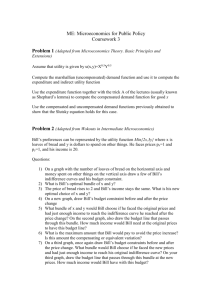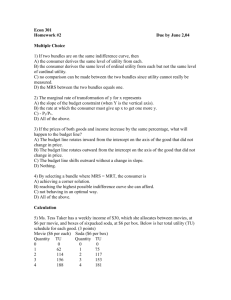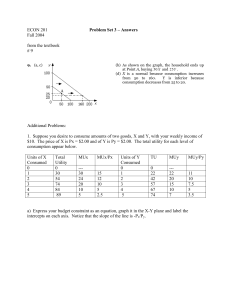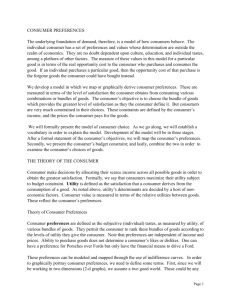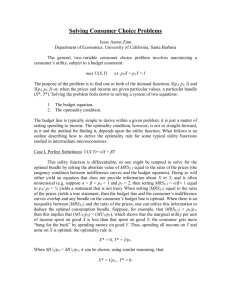Chapter 3: Practice Quiz
advertisement
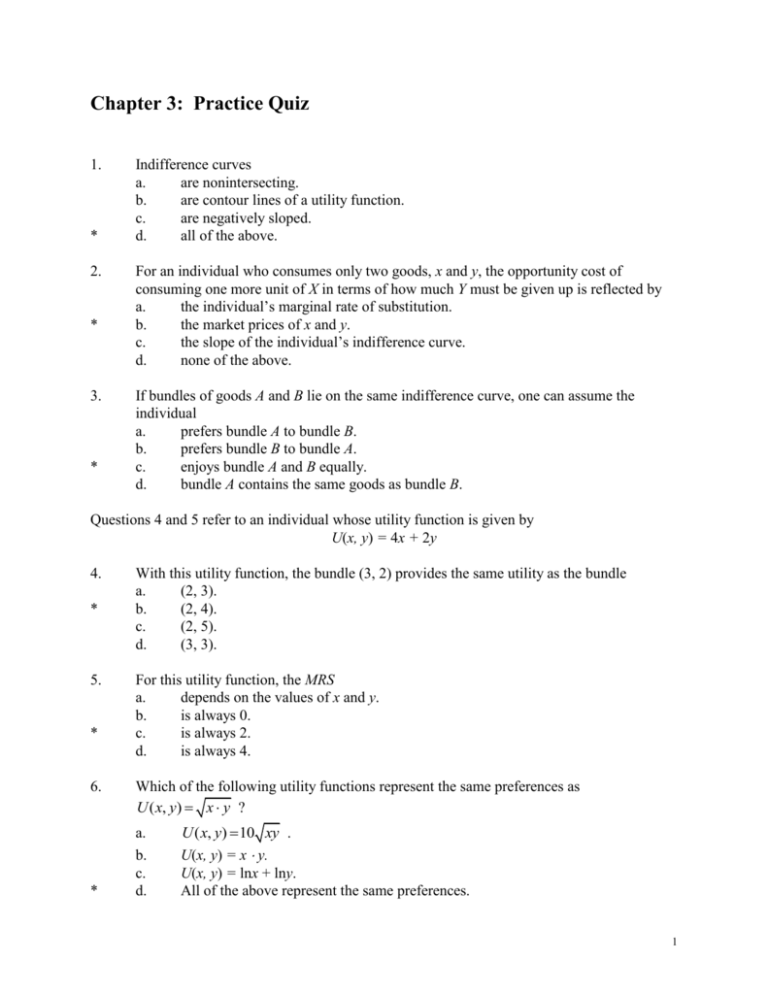
Chapter 3: Practice Quiz 1. * 2. * 3. * Indifference curves a. are nonintersecting. b. are contour lines of a utility function. c. are negatively sloped. d. all of the above. For an individual who consumes only two goods, x and y, the opportunity cost of consuming one more unit of X in terms of how much Y must be given up is reflected by a. the individual’s marginal rate of substitution. b. the market prices of x and y. c. the slope of the individual’s indifference curve. d. none of the above. If bundles of goods A and B lie on the same indifference curve, one can assume the individual a. prefers bundle A to bundle B. b. prefers bundle B to bundle A. c. enjoys bundle A and B equally. d. bundle A contains the same goods as bundle B. Questions 4 and 5 refer to an individual whose utility function is given by U(x, y) = 4x + 2y 4. * 5. * 6. * With this utility function, the bundle (3, 2) provides the same utility as the bundle a. (2, 3). b. (2, 4). c. (2, 5). d. (3, 3). For this utility function, the MRS a. depends on the values of x and y. b. is always 0. c. is always 2. d. is always 4. Which of the following utility functions represent the same preferences as U ( x, y) x y ? a. b. c. d. U ( x, y) 10 xy . U(x, y) = x y. U(x, y) = lnx + lny. All of the above represent the same preferences. 1 7. * 8. * 9. * If utility is given by U ( x, y) xy , then the person’s MRS at the point x = 5, y = 2 is given by a. 0.4. b. 1.0. c. 2.5. d. 5.0. If utility is given by U ( x, y ) x 2 2 xy y , this person’s indifference curves are a. parabolas. b. hyperbolas. c. concentric circles. d. straight lines. 2 Which of the following utility functions best represents the idea that two goods, x and y, are perfect complements? a. U ( x, y ) xy b. U(x, y) = x + y. U ( x, y ) = | x y | . c. d. U(x, y) = min(x, y). 10. * If an individual’s utility function is quasiconcave, his or her MRS will a. diminish as x is substituted for y. b. increase as x is substituted for y. c. be undefined except in special cases. d. always depend only on the ratio of x to y. 11. If utility is given by U(x, y) = Min (x, 3y) then the bundle (3,2) provides the same utility as the bundle a. (1, 3). b. (2, 3). c. (4, 1). d. (4, 2). * 12. * Which of the following utility functions would not be consistent with the notion that x and y are both “goods” with positive marginal utilities? a. U ( x, y ) = x 2 y . b. U(x, y) = x + y . c. U ( x, y ) = x y . d. U(x, y) = x/y .
